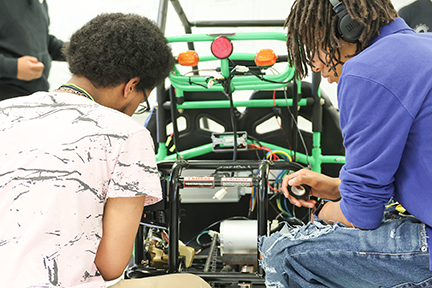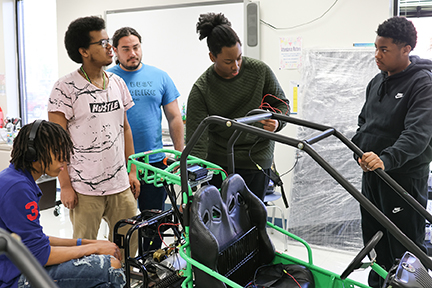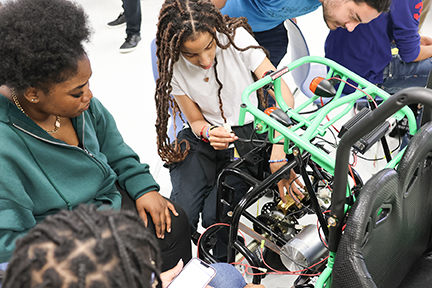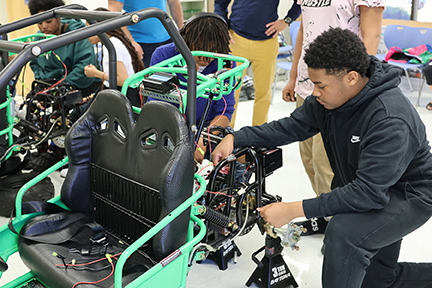Point Option science students build, test drive solar go-karts
Posted: April 25, 2024
Starting with a box of parts and the knowledge they had gained working on smaller projects, a group of Virtual Learning Academy at Point Option science students built two solar go-karts in April.
With instructors from Flying Classroom available to answer questions, students had a diagram on a whiteboard and one another to rely on as they figured out the building part. Once completed, students test drove the go-karts in the schoolâ??s parking lot.
"It was a cool experience; something I haven't really done before on this scale," said Stanley Vanburn, a 10th grader. "And it was cool to be able to do this. It was a collaborative effort."
The voluntary hands-on project provided students with a different way of learning science they are currently studying.
"It definitely helps with everything and makes things more interesting," Vanburen said.
Students came to school an hour early several days a month since February to participate in learning the intricacies of creating code with circuits and programming, as well as working on smaller building projects including a motor. Although they usually learn at home through the school's Virtual Learning Academy, a group of 18 to 20 committed to participating in-person and formed friendship bonds along with learning as they worked together.
"Each of the projects starts with an engagement piece where they started with some of the smaller projects where the instructors will get them excited about a particular topic like circuits," said Gretchen De Wall, science teacher.
"They really apply some real-life application like connecting to let's say the cell phone. And then they build. Then they're given the components to build a circuit, build a solar rover. So it's a routine for each individual build."
Teams of students assembled two go-karts, picking out parts and attaching them where needed. Tools and parts were strewn around the floor and the occasional ominous sound of a tiny metal part being dropped could be heard before it was retrieved.
They figured it out themselves, hunched over and concentrating.
"Strategizing-wise, because we don't have any paper instructions, it's more of a you doing it on your own," said 11th grader Ramiyah Jones-Spruill. "You're communicating with your teammates, trying to figure out what part goes where."
Students said they enjoyed the building process, but had their eyes on the end result of testing the vehicles.
"That's going to be the most fun part, to be completely done and trying it and testing it out," Jones-Spruill said.
Learning by doing rather than listening or observing kept students engaged.
"I learn in a way that I have to do it to understand it," said 11th grader Joel Bethea. "And this shows that. Because it would be way more difficult for me to just look at a book and someone expect me to build an airplane by just looking at a book, without seeing anyone else build an airplane before or someone walk me through."
He compared it to learning to drive a car by studying the textbook, but never taking behind the wheel instruction.
"This is basically helping us figure out actually how to do it instead of just reading about it," Bethea said.
By the time they drove the go-karts on April 19, students were cheering each other on, taking photos and celebrating the project's completion together with the school community.
"They're excited to come in-even an hour early; and they're chit chatting," De Wall said. "So the whole experience from the science aspect, yes. But also the social emotional bit is just so big for them."










